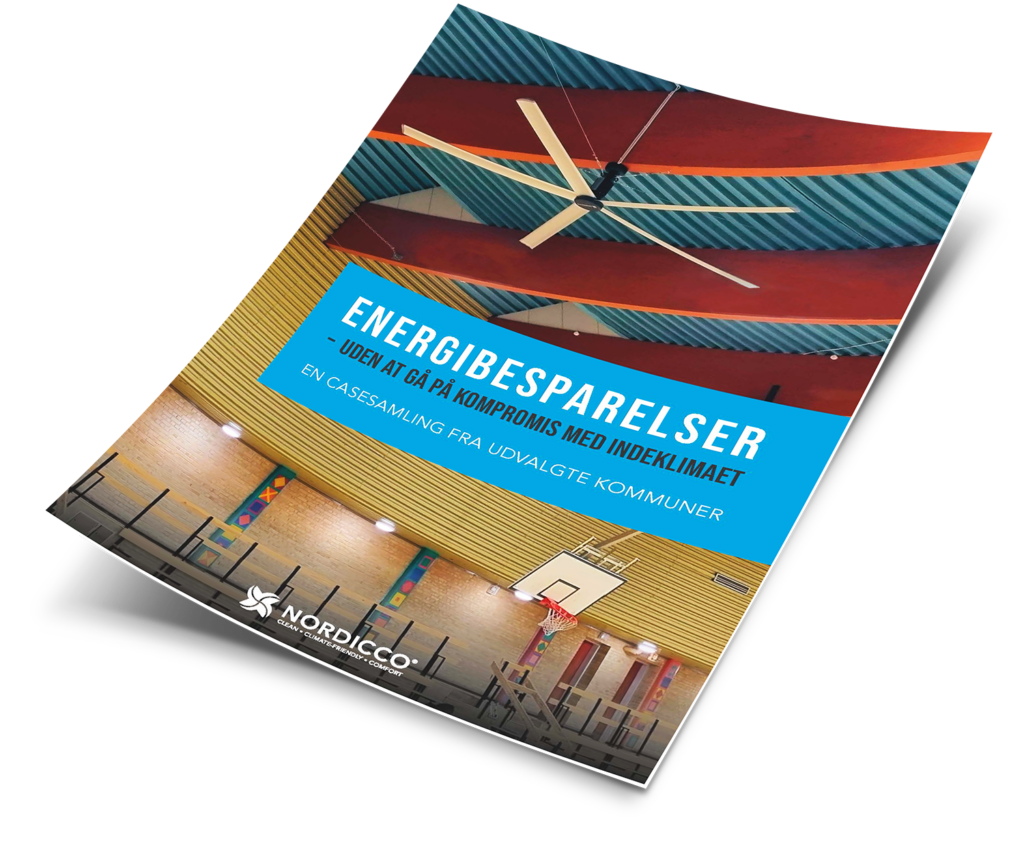C.W. Obel Real-estate, a leading real estate company in Denmark, operates Mikado House, a modern office building in central Copenhagen.
Designed by Arkitema, a renowned Scandinavian architectural firm, and completed in 2010, the building is celebrated for its contemporary design, DGNB certification, and sustainable features.
Its impressive five-story atrium and high ceilings create a visually striking space, but also presented unique challenges in maintaining efficient indoor climate control.
To address these issues, C.W. Obel Ejendomme installed HVLS (High Volume Low Speed) fans from Nordicco A/S, optimizing both energy efficiency and indoor comfort.
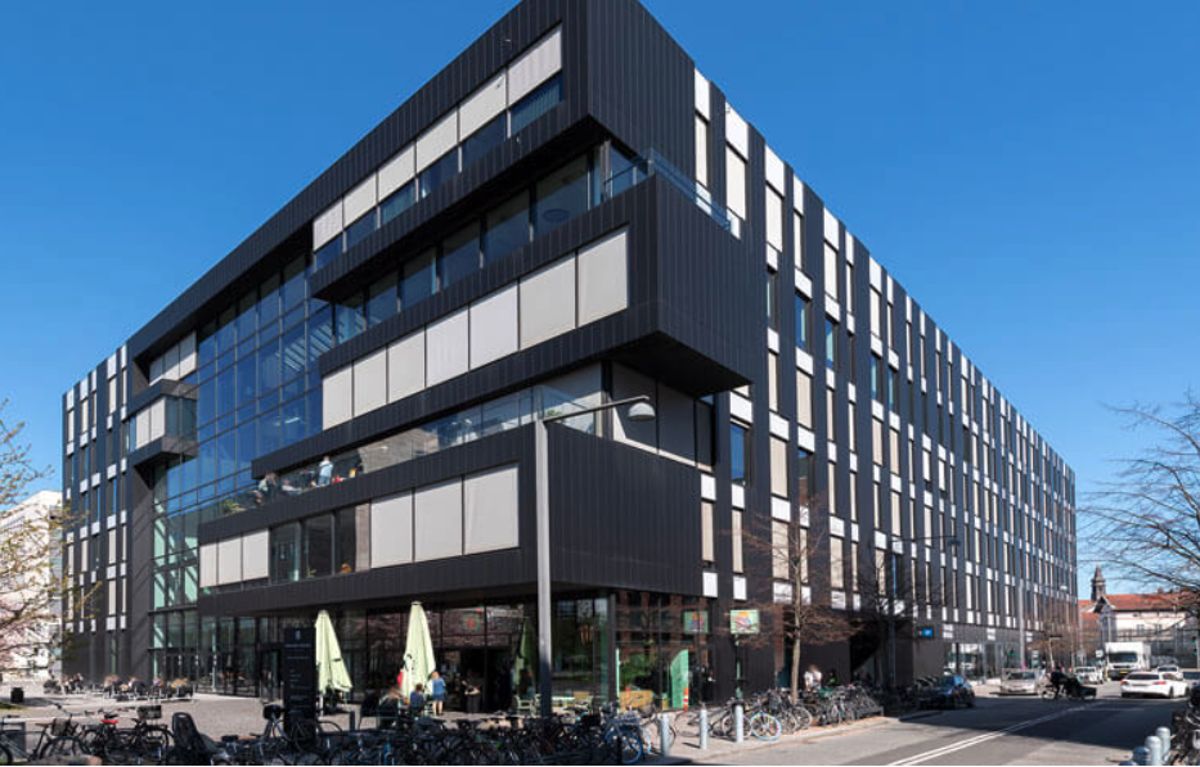
Its impressive five-story atrium and high ceilings create a visually striking space, but also presented unique challenges in maintaining efficient indoor climate control.
To address these issues, C.W. Obel Ejendomme installed HVLS (High Volume Low Speed) fans from Nordicco A/S, optimizing both energy efficiency and indoor comfort.
Mikado House’s architecturally distinctive design features an expansive five-story atrium with a ceiling height of 25 meters.
While this open layout creates a modern aesthetic, it also posed significant airflow challenges. Warm air would rise and stay trapped near the top, leading to uneven temperature distribution.
This imbalance increased energy consumption, made climate control costly, and affected tenant comfort.
C.W. Obel Real-estate company installed three 5-meter-wide HVLS fans in Mikado House’s atrium. Specifically they chose the all-white Northern Air Pro fans to make them blend seamlessly into the building’s design.
These fans offer multiple benefits for air circulation, energy savings, and sustainability in large open spaces like atriums.

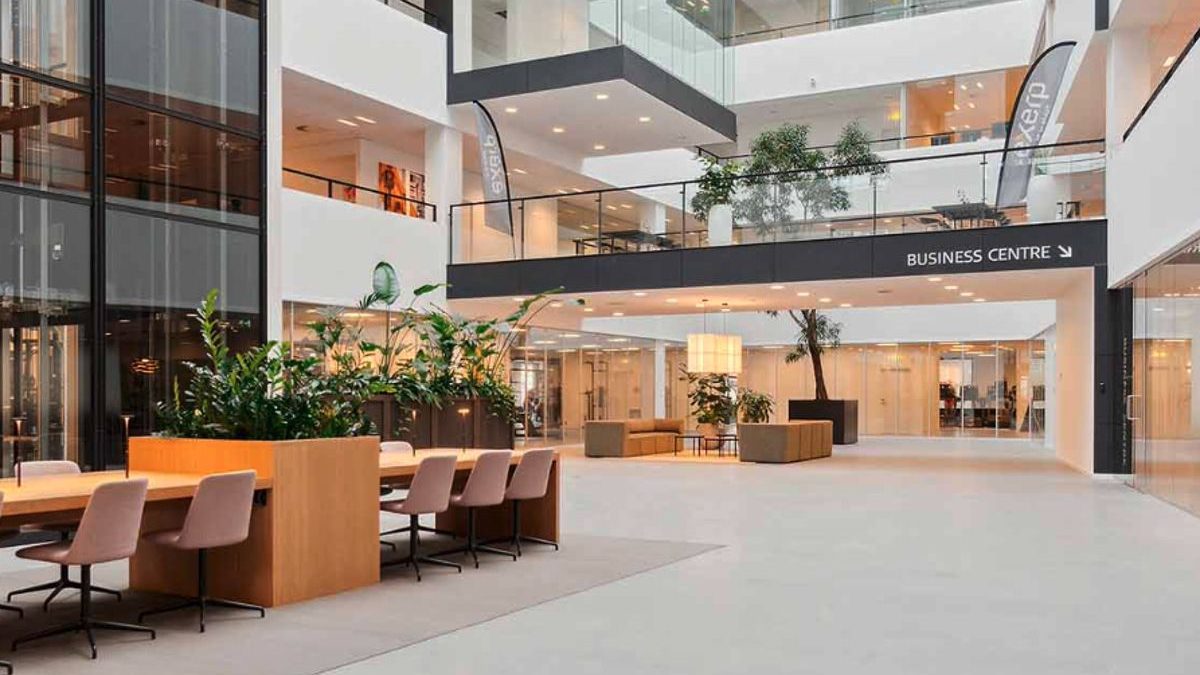
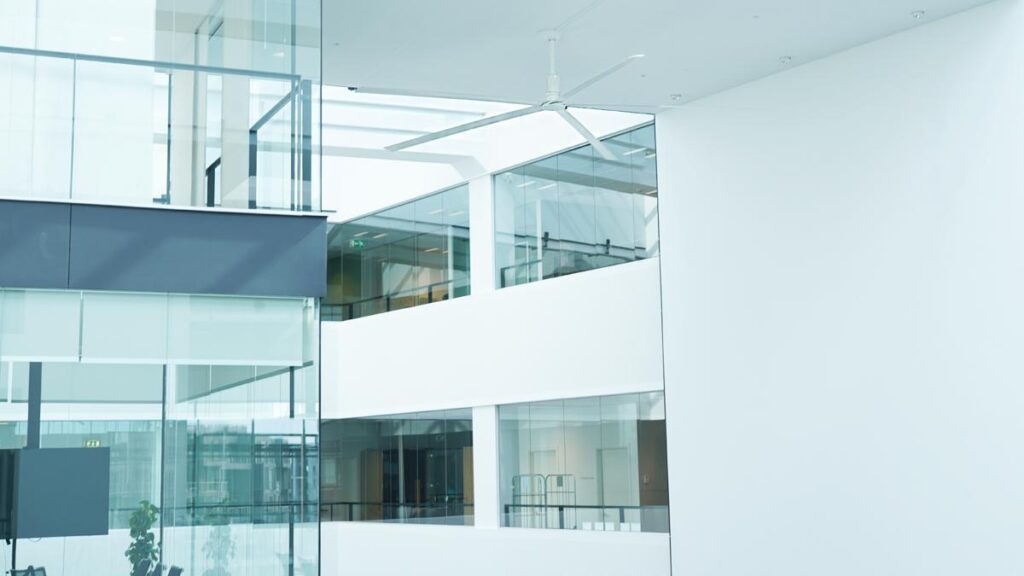
The fans’ energy-efficient design helps reduce strain on HVAC systems, contributing to both energy savings and sustainability:
Mikado House’s fans are controlled via the online platform, Northern Sky. Here, all the buildings live and historical data is stored and automatic schedules set up. This is also where temperature variations across different heights in the atrium are monitored and fan settings are fine-tuned.
This investment has significantly lowered operational costs and enhanced the building’s energy efficiency. The fans address both seasonal climate control and energy efficiency:
Lars Henriksen, Energy and Installations Manager at C.W. Obel Real-estate company, highlights the dual benefits of the HVLS fans:
“In summer, the fans ensure a consistent temperature from floor to ceiling, creating a cooling effect without the need for extra air conditioning. In winter, the fans run in reverse, distributing heat evenly throughout the atrium. This allows us to save up to 25% on heating by utilizing the warmth more effectively. Before the fans we often had a 4°C temperature difference between floor and ceiling in the atrium.”
Lars Henriksen is pleased that he found the HVLS fan solution that works well for his specific challenges with ventilation in high-ceiling buildings.
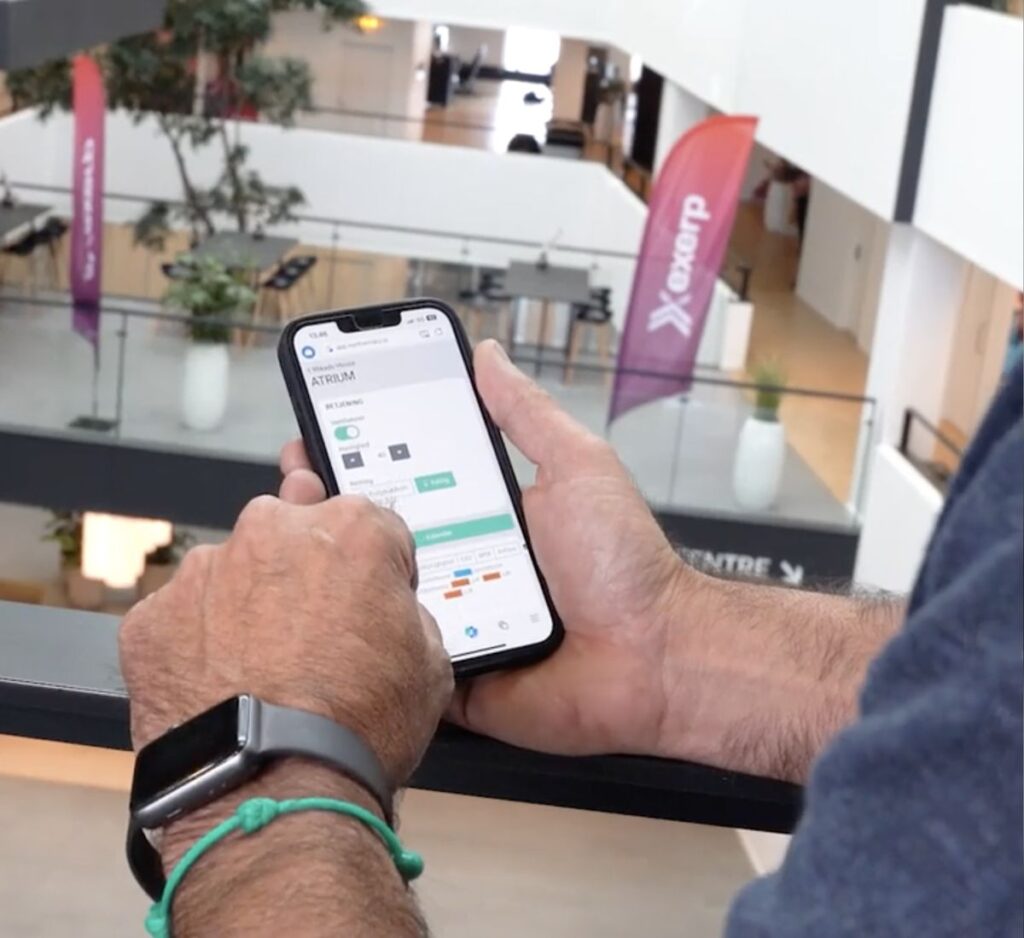
“In summer, the fans ensure a consistent temperature from floor to ceiling, creating a cooling effect without the need for extra air conditioning.
In winter, the fans run in reverse, distributing heat evenly throughout the atrium. This allows us to save up to 25% on heating by utilizing the warmth more effectively.
Before the fans we often had a 4°C temperature difference between floor and ceiling in the atrium.”
Lars Henriksen
Energy & Installation Manager at C.W. Obel Real-Estate
For architects and consulting engineers, the Mikado House case demonstrates how HVLS fans can enhance climate control without compromising design.
HVLS fans are highly adaptable to different spaces, and can be custom coated in any color, making them ideal for large, architecturally significant buildings.
By integrating energy-efficient achitectural ventilation solutions such as HVLS fans, architects can contribute to reducing a building’s overall carbon footprint, while engineers can optimize the mechanical systems for maximum efficiency.
This approach supports certifications like DGNB, LEED, and BREEAM, making HVLS fans a key component in sustainable building design.
